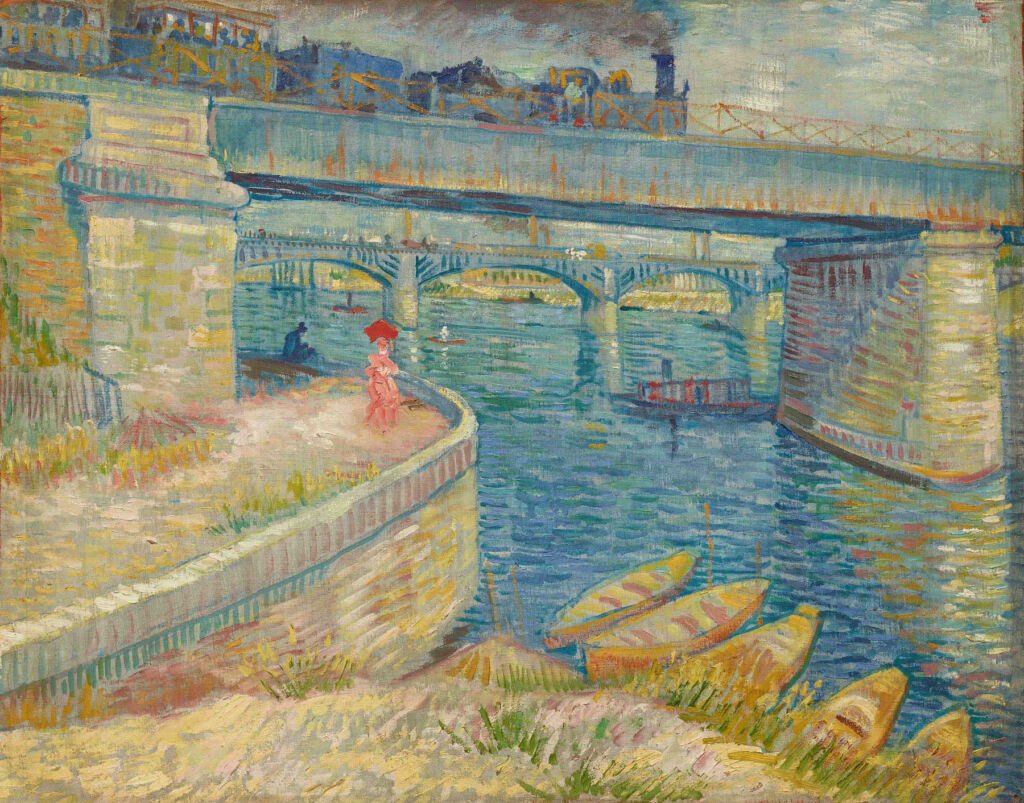
From Friday, 13 October, the Van Gogh Museum will be presenting a pioneering exhibition that explores for the first time how the area along the Seine near Asnières, to the northwest of Paris, was crucial to the artistic development of Vincent van Gogh, Paul Signac, Georges Seurat, Emile Bernard and Charles Angrand.
Van Gogh along the Seine tells the story of a period in Van Gogh’s life and oeuvre that has, until now, been neglected. Never before have so many works Van Gogh made in the suburbs just outside of Paris been displayed together. Seven of the nine highlights from his triptychs will be reunited at the exhibition.
The exhibition features 75 works by the five artists, including many exceptional loans from private collections and museums worldwide. Several of these works have never been on display in the Netherlands. The Van Gogh along the Seine exhibition is being held in collaboration with the Art Institute of Chicago.
Nature and industry
Urban development in Paris profoundly affected the surrounding areas in the nineteenth century. Until 1850, Asnières – a suburb to the northwest of Paris – was known as an idyllic location full of greenery where city-dwellers could enjoy spending their spare time.
Modern train stations and iron bridges improved access to the Parisian suburbs, making them increasingly popular. In the years preceding 1880, the area underwent a rapid transformation. Industry flourished, and the city’s explosive growth swallowed up the rural suburbs.
In addition to the convenient location, close to the French capital, these dramatic changes to the landscape came to the attention of Vincent van Gogh, Paul Signac, Georges Seurat, Emile Bernard and Charles Angrand to the area between 1881 and 1890. With their easels positioned in the lush landscape, they captured the radical opposition that characterised the area: day trippers enjoying nature were in strong contrast with smoking chimneys and undeveloped land.
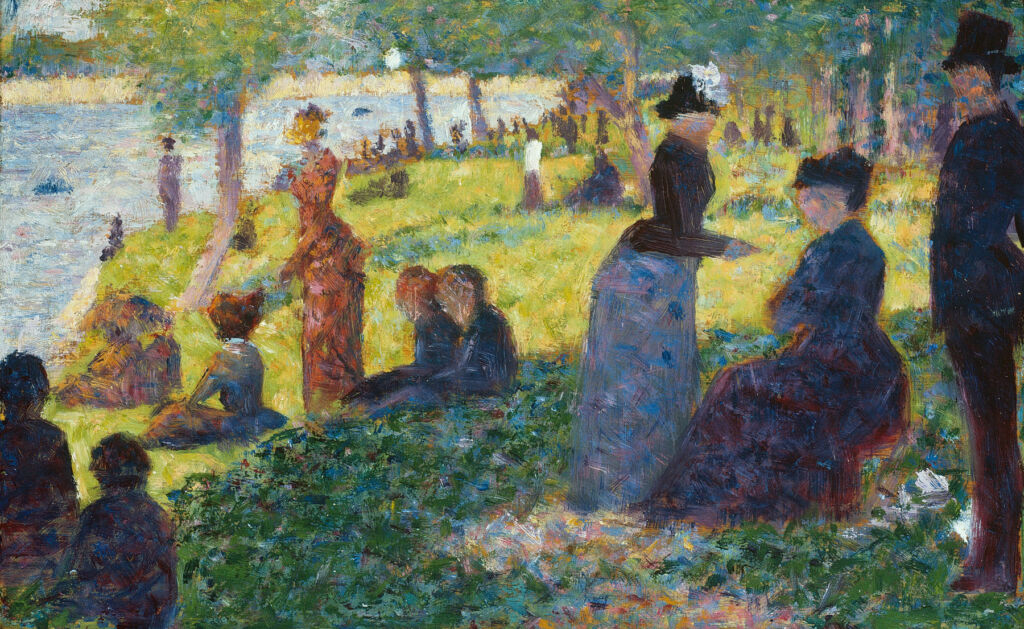 Georges Seurat, Oil Sketch for ‘La Grande Jatte’, 1884, oil on panel, 15.5 × 24.3 cm, The Art Institute of Chicago, gift of Mary and Leigh Block.
Georges Seurat, Oil Sketch for ‘La Grande Jatte’, 1884, oil on panel, 15.5 × 24.3 cm, The Art Institute of Chicago, gift of Mary and Leigh Block.
Emilie Gordenker, the Director of the Van Gogh Museum, said, “As the international centre of expertise on Van Gogh, we are constantly seeking new insights into the artist. It is the first time that the works Van Gogh painted in Asnières have been examined as a group and have been compared with the work of four contemporaries who painted in the same area. Van Gogh along the Seine is also a rare opportunity to see impressive loans from private collections that are normally hidden from view.”
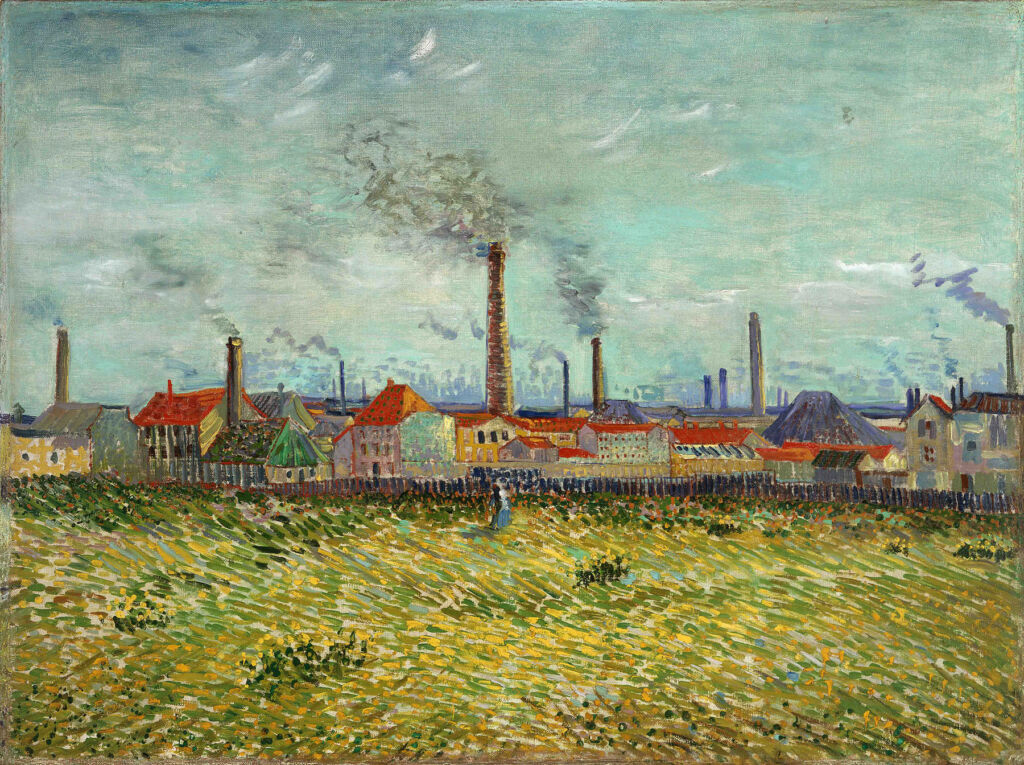 Vincent van Gogh, Factories at Clichy, 1887, Oil on canvas, 53.7×72.7 cm Saint Louis Art Museum, Missouri Funds given by Mrs Mark C. Steinberg by an exchange.
Vincent van Gogh, Factories at Clichy, 1887, Oil on canvas, 53.7×72.7 cm Saint Louis Art Museum, Missouri Funds given by Mrs Mark C. Steinberg by an exchange.
The Neglected Period
Until now, the fact that Van Gogh left the city nearly every day for three months during his two-year stay in Paris has remained widely unknown. Van Gogh worked in and around Asnières, making some forty paintings from early May until the end of July 1887. The area was about five kilometres from where he lived in Montmartre, and Van Gogh went on foot with his painters’ supplies nearly every day to capture the changing landscape.
He viewed this period as a ‘painting campaign’, in which he wanted to discover new motifs and experiment extensively with style and use of colour.
Van Gogh was not the only artist to be attracted to Asnières. He was following the example of painters like Seurat, Signac, Bernard and Angrand, who had also started working on the banks of the river to the northwest of Paris.
On La Grande Jatte, an island in the Seine near Asnières, Seurat developed his revolutionary stippling technique (pointillism), which he further refined together with Signac. Bernard also started using his characteristic painting style in the suburbs: cloisonnism, using large, flat areas of colour with strong contours.
On the banks of the Seine, Van Gogh first experimented with the colourful portrayal of light, using loose brushwork. And it was here that he took significant steps towards the brightly-coloured paintings he made in the South of France. When he ultimately returned to nature a year later in Arles, the same energy and productivity were reignited in him as during his campaign in Asnières.
“And when I painted landscape in Asnières this summer, I saw more colour in it than before.” – Vincent van Gogh to his sister Willemien, 1887.
New Discoveries
Drawing on new and in-depth art historical research, the exhibition sheds light for the first time on the artistic revolution that took place in Asnières. An international team of experts studied historical photographs and postcards and were able to establish the exact locations of the paintings and chart the small area in which the works were made.
The period in Asnières significantly impacted all five artists, inspiring them to refresh their use of colour and painting technique. By leaving the city and heading into the suburbs, they could continue to modernise painting.
Van Gogh’s triptychs
The artistic highlight of Van Gogh’s time in Asnières is the three triptychs he made there: nine paintings. He captured the diverse character of three locations where he worked.
The Grande Jatte triptych is sketchy; the Clichy triptych is pale green, and the Asnières triptych is lively, with bridges, boats and restaurants. The paintings, scattered around various private and museum collections, are now being brought back together.
Seven of the nine works are being reunited for this exhibition, including highlights such as Bridges Across the Seine at Asnières (1887, Kunsthaus Zürich), Fishing in Spring, the Pont de Clichy (Asnières) (1887, The Art Institute of Chicago), A Woman Walking in a Garden (1887, private collection) and River Bank in Springtime (1887, Dallas Museum of Art). This is the first time that the paintings are being displayed together.
Special loans from private collections
More than sixty paintings and fifteen drawings will be on display, including no fewer than twenty-five works from private collections. Van Gogh’s Banks of the Seine with the Pont de Clichy (1887, private collection) last went on public display in 1959 and has never been exhibited in the Netherlands previously.
Bank of the Seine with Boats (1887, private collection) will be displayed to the public for the first time since 1984.
Two iconic paintings by Angrand and Seurat of the Seine are being reunited for the first time since the summer of 1888 when the two artists worked side by side on their paintings on the island of La Grande Jatte.
The exhibition is accompanied by a richly illustrated catalogue that offers insight into how the area around Asnières inspired the five painters. Van Gogh and the Avant-Garde: Along the Seine features essays by researchers and curators, as well as images of all of the works on display in the exhibition. The book also includes a unique section with postcards, forming a visual essay introducing the places where the artists worked.
The catalogue is edited by Bregje Gerritse from the Van Gogh Museum and Jacquelyn N. Coutré from the Art Institute of Chicago. The other contributing authors are Jena Carvana, Charlotte Hellman, Joost van der Hoeven, François Lespinasse, Teio Meedendorp and Richard Thomson. The catalogue is published by THOTH, Bussum. The book is available in English and Dutch, costing € 29.95.
Supporters
Van Gogh along the Seine has been made possible by the support of the Ministry of Education, Culture and Science and the museum’s main partners: the VriendenLoterij, ASML and DHL. Van Lanschot Kempen and the Sunflower Circle also support the exhibition.
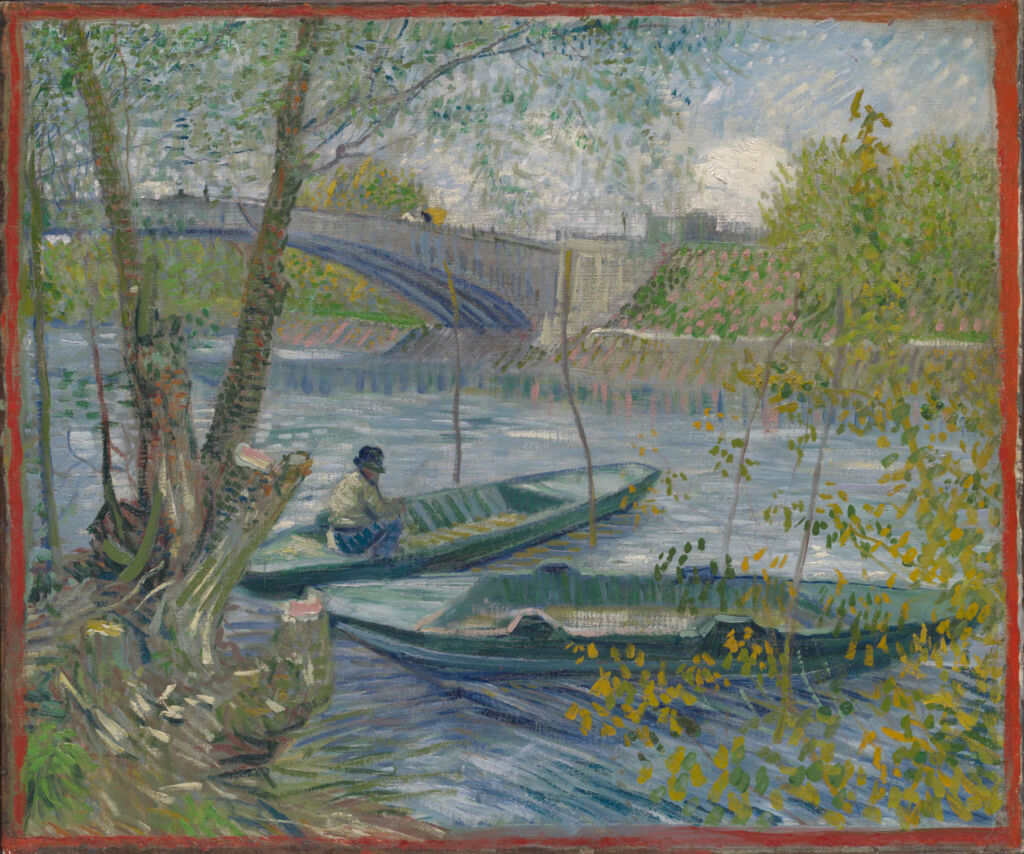 Vincent van Gogh, Fishing in Spring, the Pont de Clichy (Asnières), 1887, oil on canvas, 50.5 × 60 cm, The Art Institute of Chicago, gift of Charles Deering McCormick, Brooks McCormick, and the Estate of Roger McCormick.
Vincent van Gogh, Fishing in Spring, the Pont de Clichy (Asnières), 1887, oil on canvas, 50.5 × 60 cm, The Art Institute of Chicago, gift of Charles Deering McCormick, Brooks McCormick, and the Estate of Roger McCormick.
Van Gogh along the Seine takes place from 13 October 2023 to 14 January 2024.
Lead image: Vincent van Gogh, Bridges Across the Seine at Asnières, 1887, Oil on canvas, 53.5×67 cm Emil Bührle Collection, on long-term loan at the Kunsthaus Zürich.
The images used in this feature are all courtesy of the Van Gogh Museum.
Read more art news and features here.
![]()

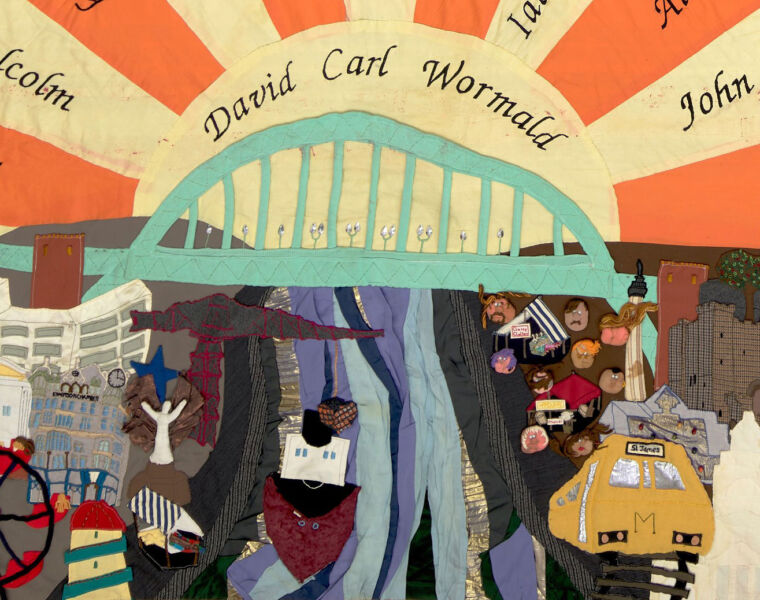

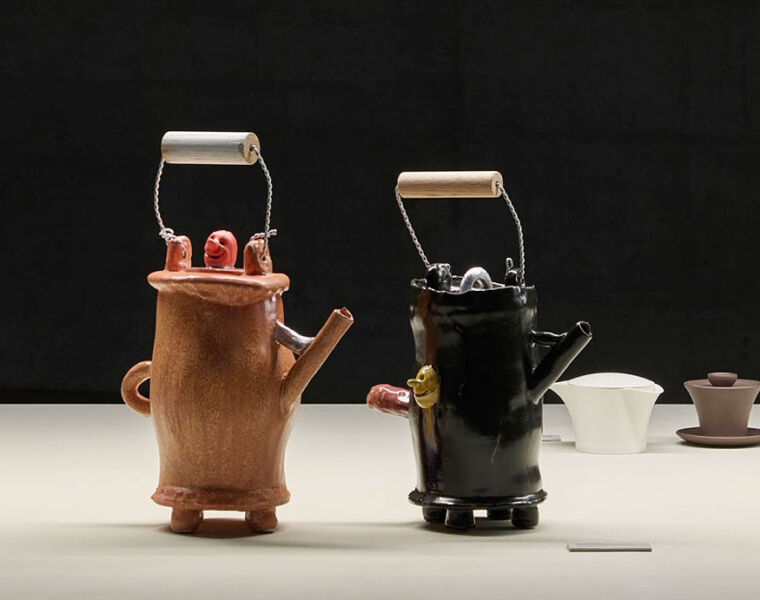
You must be logged in to post a comment.